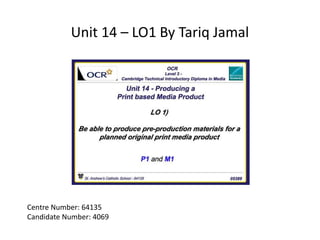This document provides details about the development of a magazine called "Choral" focused on choral and opera music genres. It includes draft designs for the front cover and double page spreads, descriptions of the chosen designs and layouts, and explanations for font, color and style choices aimed at representing the classic music theme. Production details like the flat plan, graphic layouts, and planned content are presented. The document demonstrates thorough planning for the visual design, content, and overall presentation of the magazine to effectively engage its target audience of classic music enthusiasts.










































